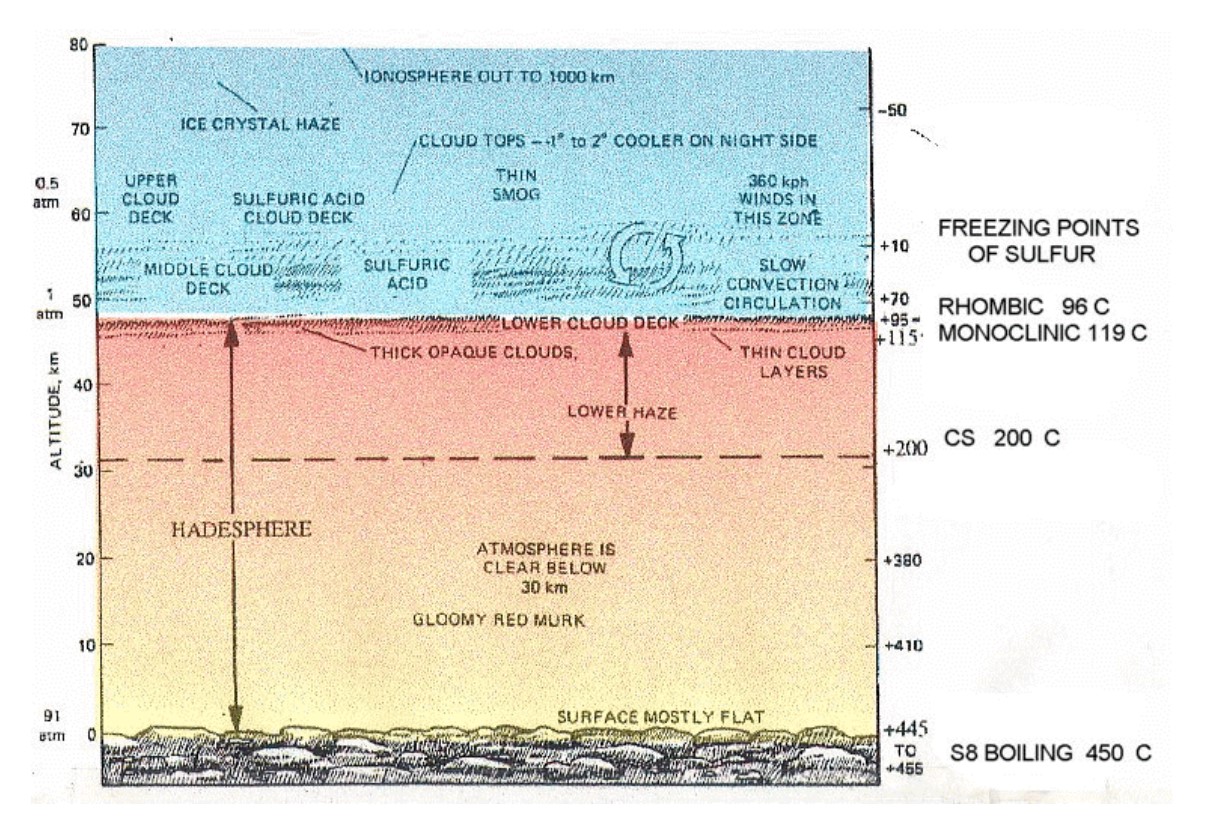
'The Chemistry of the Hadesphere' Aluminium tube, dog toys, magnets, steel discs. 2023

'The Chemistry of the Hadesphere' Aluminium tube, dog toys, magnets, steel discs. 2023
 Current consensus proposes that these features are the result of ‘runaway global warming’, however this does not fulfill all of the observed criteria. The artwork in this exhibition illustrates a model of the atmosphere (John Ackerman – ‘An Alernative Venus’, 2006) where the high temperature and pressure of the atmosphere includes a large component of the ring molecule Sulfur-8.
Current consensus proposes that these features are the result of ‘runaway global warming’, however this does not fulfill all of the observed criteria. The artwork in this exhibition illustrates a model of the atmosphere (John Ackerman – ‘An Alernative Venus’, 2006) where the high temperature and pressure of the atmosphere includes a large component of the ring molecule Sulfur-8.
Click on image to enlarge
This is the high temperature variant of sulphur which, at its sublimation temperature, exactly matches that of the Venusian surface. Combined with carbon, this molecule (CS) has a molecular weight of 44 – the same as Carbon Dioxide. This is vented from the 200,000+ volcanic ‘pancake’ features scattered across Venus in ballistic plumes. These add to the high density.
In the playful spirit of model making, this artwork has the ring Sulfur-8 molecule represented by beautifully iridescent dog toys. These are arrayed in the pattern of the absorption lines of sulfur along the length of a suspended tube. The column is off-set against the gravitational field as it approaches the surface of the planet. This incorporates the additional electro-magnetic charge field component which, in opposition to that of the Sun, is simultaneously slowing down the body of the planet and accelerating the winds of the upper atmosphere

The rings are arranged along the tube in the sequence of the Fraunhofer absorption lines of its spectrum (see above).
 Although providing an description of the nature of what John Ackerman called the Venusian ‘Hadesphere’, this artwork proposes an aesthetic inversion. In the spirit of Goethe’s Faust it advances the Ruler of this Hadesphere as an Apollo; a bringer of understanding and light.
Although providing an description of the nature of what John Ackerman called the Venusian ‘Hadesphere’, this artwork proposes an aesthetic inversion. In the spirit of Goethe’s Faust it advances the Ruler of this Hadesphere as an Apollo; a bringer of understanding and light.
Click on image to enlarge
So is the planet Venus undergoing braking? Yes! - at approximately 20 seconds per year. At this rate the planet will come to a stop in 1 million years and start to rotate in synch with the other bodies in the Solar System. At this point it will rapidly cool, the upper atmosphere descend, and develop into a relatively Earth.like planet. If Venus is of a similar age to the Solar System how could this ever have come about?
Even a decade ago it would have been thought unlikely that planets could exist in interstellar space unattached to any star. Yet recently we have come to discover that these kind of objects (rogue planets) are relatively common. If Venus was just such a rogue planet and entered into the Solar System, it would be reasonable to infer that it would have exhibited chaotic behaviour before settling into its current stable orbit.
To achieve this state of orbital balance it would be necessary for its gravitational vector to be opposed by a charge vector. Any flipping of the Poles could have occurred at this time, assuming an Earth-like initial rotation, and in a potentially recent epoch